Yamaha prototype hybrid motorcycle blends a petrol power with not one but two electric motors
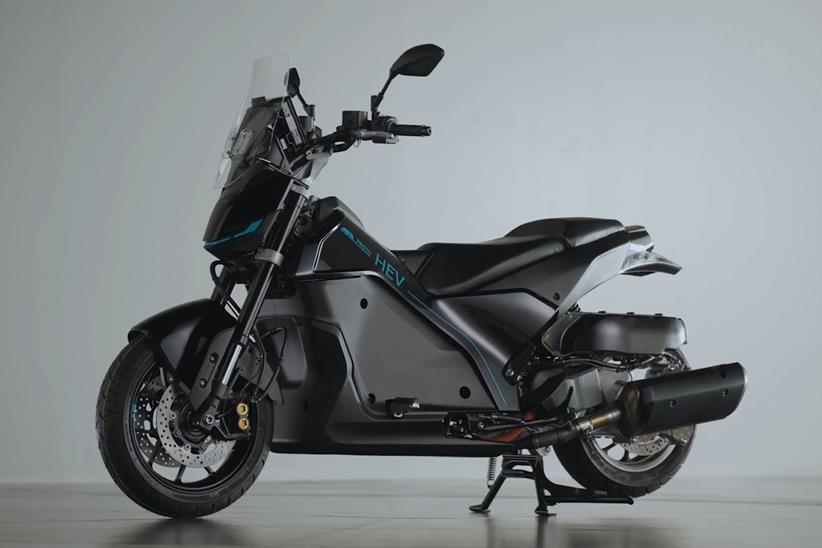
Yamaha has developed an innovative petrol-electric hybrid powertrain which could be heading for production in the future.
The system uses a traditional combustion engine as well as two electric motors, allowing for multiple operating modes ranging from full electric running at low speeds, to all three power sources driving together for maximum straight-line speed.
Known as a ‘series-parallel’ hybrid design, this represents the first time such a system has been used on two wheels.
For now, Yamaha say their SPHEV system is currently being designed for “a mid-class scooter”, and have built a working prototype based on a heavily modified XMax. However, they’ve also dropped a sizeable hint that the system could be applied to their three-cylinder 890cc CP3 platform.
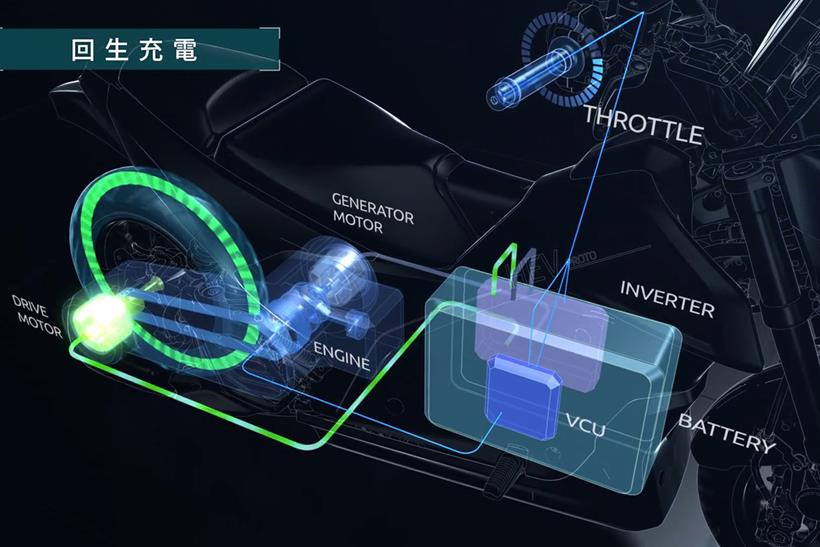
Two motors, one engine
While no exact details about engine size, motor outputs or battery capacity have been confirmed, Yamaha has provided an insight into how their SPHEV system works.
It starts with an internal combustion engine – in the prototype’s case, possibly the 292cc single from the XMax 300 – connected to the rear wheel by what appears to be a familiar scooter-style CVT final drive. To this Yamaha have added not one, but two, electric motors.
The first, known as the ‘drive’ motor, is mounted inline with the rear wheel. It operates both as a motor, applying torque directly to the wheel, and can also be used for regenerative braking, putting charge back into the battery while coasting or slowing down.
The second electric motor, attached to the petrol engine’s crankshaft, is called the ‘generator’ motor. Its main job, as the name implies, is working with the combustion engine, generating electricity to charge the battery.
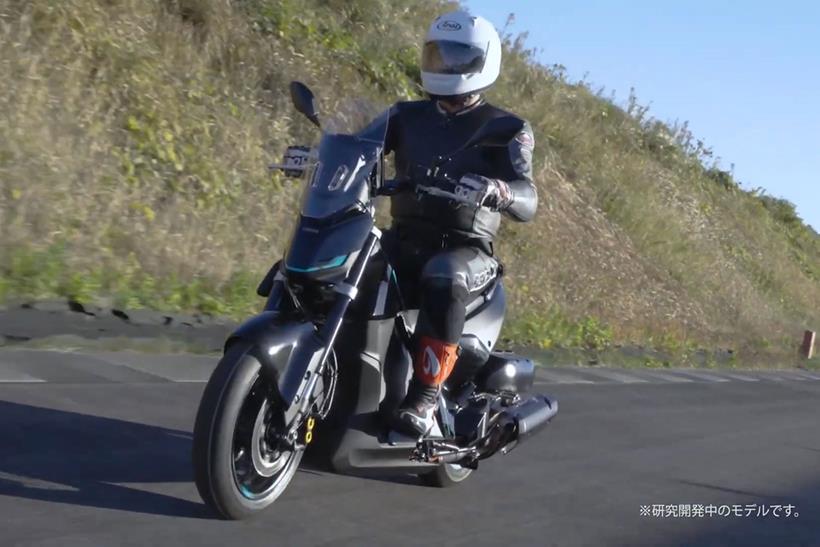
But when the rider wants full performance, it can also work in reverse, driving the crank and helping the piston engine to spin up faster.
The hybrid system begins in full-electric mode. Open the throttle and the rear drive motor draws energy from the battery to get you moving; close the throttle and it acts a generator, adding charge while you’re slowing down.
After that, the petrol engine joins the party. At first it acts simply as a generator, creating electricity to charge the battery. But as speeds climb higher the engine swaps roles to instead drive the rear wheel through a scooter-style variable transmission.
When more performance is needed, the drive motor works together with the petrol engine to give ‘dual boost’. And for maximum acceleration all three power sources chime in simultaneously, with the crank-mounted electric motor assisting the petrol engine.
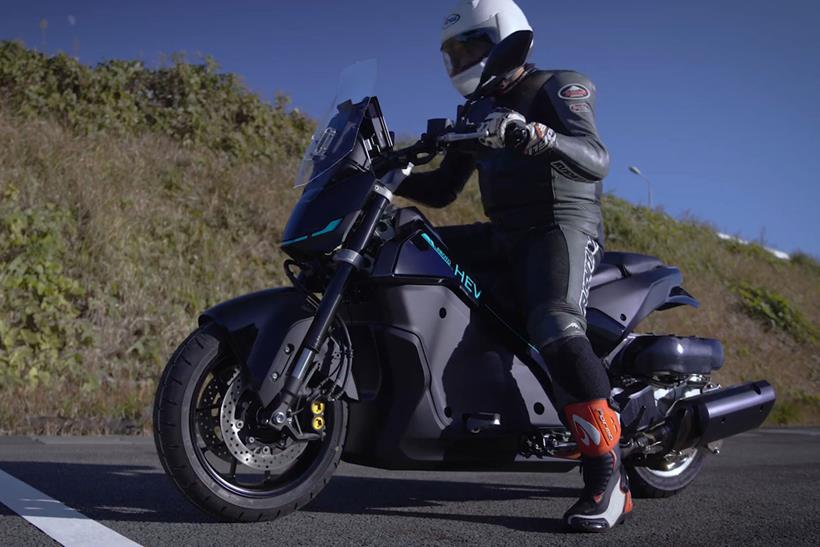
From scooter to sporty naked
Yamaha’s working prototype may have started life as an XMax, but it’s been transformed from conventional step-thru scooter to a radical-looking urban runabout.
The space where a rider’s legs would usually sit has been filled in by the hybrid system’s battery, inverter and vehicle control unit. So instead of feet sitting flat on floorboards, they now rest on motorcycle-style footpegs, though the back brake is still operated by a lever on the left handlebar.
There are other notable chassis changes, including a set of upside-down forks and a pair of radially mounted brake calipers which look more TMax than XMax. The silencer has also switched sides, from the right side to the left, presumably to avoid the placement of the rear drive motor.
Whether the production-ready machine resembles this unconventional prototype, or whether Yamaha’s continuing development work results in something that’s closer to a standard scooter, remains to be seen.
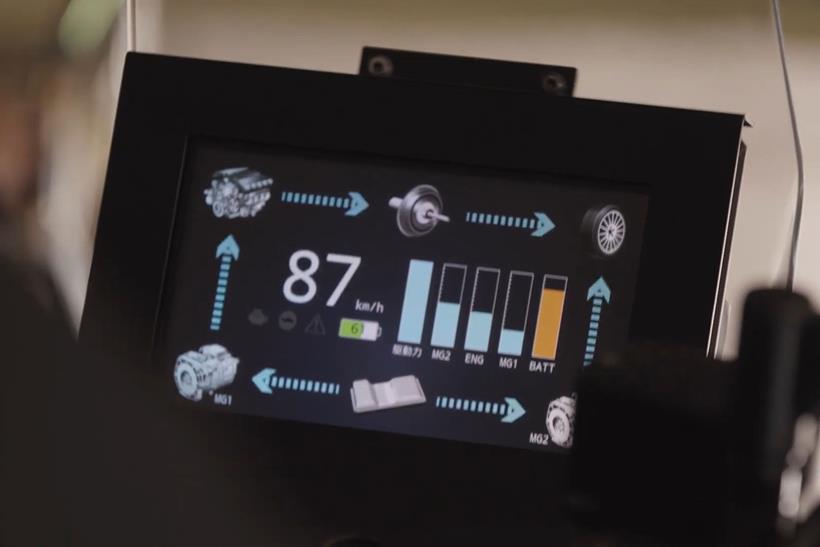
But Yamaha has dropped a big hint about another application of this hybrid technology that they’re investigating. At the end of the SPHEV announcement video, the words “What’s coming next” are shown over a close-up shot of Yamaha’s distinctive 890cc CP3 triple.
An MT-09 made even more responsive by a pair of instant-torque electric motors? Count us in…
Why it’s different to Kawasaki
Yamaha’s system is a ‘series-parallel’ hybrid. This means it brings together two different ways to design a hybrid powertrain. It is, effectively, a hybrid of hybrids.
In a ‘series’ hybrid, the combustion engine doesn’t ever drive the vehicle forward directly. Instead, it’s only used to generate electricity, while the wheels are always turned by electric motors.
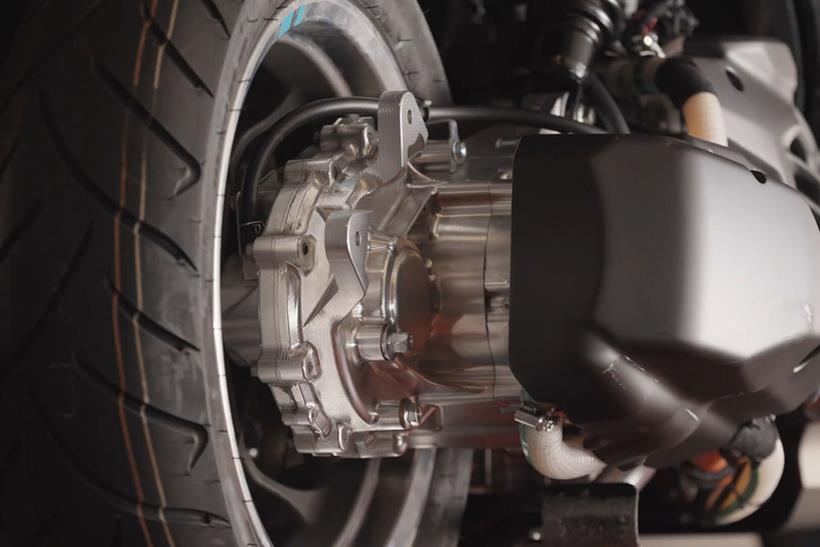
In a ‘parallel’ hybrid, the combustion engine and electric motors can work independently, or together. Kawasaki’s Ninja 7 and Z7 Hybrid bikes use a parallel design – they can run just on electric, or just on petrol, or both at once.
Yamaha’s prototype brings both of these ideas together. The petrol engine can effectively serve as just a bolt-on generator, or it can drive the rear wheel directly. This increased flexibility should allow it to run even more efficiently across a wider range of riding scenarios, improving both fuel economy and performance.






